To create mouthwatering off-grid meals, start with aromatic vegetable bases like mirepoix or soffritto, cooking them slowly until golden. Master the five flavor elements (sweet, salty, sour, bitter, umami) and add spices strategically – hardy spices early, delicate herbs late. Use the sun's peak hours for intense cooking, and manage temperature zones effectively by moving food between hot and cool areas. Layer textures by combining soft and crunchy elements, while balancing heat with acidic ingredients. Don't forget finishing touches like citrus, fresh herbs, or quality oils. These fundamental techniques will transform your outdoor cooking from basic to extraordinary.
Build Your Aromatic Base First

When cooking off the grid, your first step in creating deeply flavorful dishes is mastering aromatic bases. You'll want to start with classic combinations like the French mirepoix, Italian soffritto, or Cajun holy trinity, depending on your dish's style. Cut your vegetables uniformly to guarantee even cooking throughout.
Heat your chosen fat slowly in your camp cookware, then add your diced aromatics. Don't rush this step – gentle heating releases more flavor and prevents burning. Lack of aromatics will result in disappointingly bland dishes, so don't skip this crucial step.
Whether you're using butter for a French-style base or olive oil for an Italian soffritto, let the vegetables slowly caramelize until they're golden and fragrant. For Asian-inspired meals, start with garlic, ginger, and green onions.
This vital foundation will transform your off-grid meals from basic to exceptional, setting the stage for soups, stews, or rice dishes.
Master The Five Flavor Elements
As you explore off-grid cooking, mastering the five fundamental flavor elements – sweet, salty, sour, bitter, and umami – will elevate your outdoor meals from basic to exceptional.
Each element plays a vital role in creating balanced dishes, even with limited ingredients.
You'll find that sweetness counteracts saltiness and tames spicy heat, while salt enhances natural flavors and balances bitterness.
Sour ingredients like citrus or vinegar cut through rich, fatty dishes and add brightness.
Bitter elements provide complexity and depth, working especially well to balance intense sweetness.
When combining these flavors, add seasonings gradually and taste frequently. Well-balanced dishes stimulate all taste receptors simultaneously, creating more satisfying meals.
Remember that in off-grid cooking, you're working with simple ingredients, so achieving harmony between flavors becomes even more important.
Let each element contribute without dominating the others.
Time Your Spice Additions Right

To build rich, layered flavors in your off-grid cooking, you'll need to master the art of spice timing.
Your early seasonings, like cumin and turmeric, should go in at the start to develop deep, complex flavors, while fresh herbs and finishing spices work best near the end to maintain their vibrancy.
Understanding when to add each spice will transform your dishes from flat to fantastic, as proper timing guarantees every seasoning contributes its full potential to your meal. For slow-cooked stews and braised meats, hearty whole spices like bay leaves, star anise, and cardamom are essential additions at the beginning of cooking.
Early Vs Late Seasonings
Mastering the timing of spice additions can transform your off-grid cooking from good to exceptional.
When cooking over a campfire or portable stove, you'll want to add hearty spices like cumin, coriander, and mustard seeds early to develop rich, deep flavors. Bloom them in hot oil to release their essential oils.
Add medium-heat spices like paprika, chili powder, and garam masala halfway through cooking to prevent bitterness while maintaining their distinct character.
Save fresh herbs, black pepper, and delicate seasonings for the final minutes to preserve their bright flavors and aromatic qualities.
Don't forget about salt – it's vital at every stage.
Salt your ingredients early to season from within, adjust during cooking, and finish with a sprinkle of flaky salt for added texture and flavor enhancement.
Timing for Maximum Impact
While timing is essential in any cooking scenario, it becomes even more crucial when preparing meals off-grid.
You'll want to layer your seasonings strategically for the best results. Start by pre-salting large cuts of meat days ahead, allowing for proper dry brining. Add your base spices early in the cooking process, letting them bloom and develop depth.
Incorporate fats like olive oil or butter at the beginning to help distribute flavors evenly throughout your dish. Layer in acids carefully – use them for marinades early on, but save fresh citrus squeezes for just before serving.
Remember to finish with a sprinkle of flaky salt and a drizzle of quality fat for that final punch of flavor. Grind your spices fresh whenever possible, as they'll release more essential oils and create bolder tastes.
Harness Peak Sun Hours
Since sunlight peaks between 11:00 am and 3:00 pm, you'll want to plan your solar cooking around these critical hours. During this window, you'll benefit from the most direct sunlight and highest UV rays, making it perfect for baking breads and cakes.
You'll need to adjust your cooking schedule based on seasons and location. If you're in cloudier regions like Oregon or Minnesota, maximize your success by tracking the sun's position carefully and extending your preheating time.
Southern states like Arizona and Texas offer more favorable conditions year-round.
Set up your solar oven where shadows won't interfere, and angle the top according to your latitude. Use reflective materials like aluminum foil or Mylar tape, and paint the interior black.
Adding thermal mass, such as a brick, will help maintain consistent temperatures.
Layer Fresh and Dried Herbs
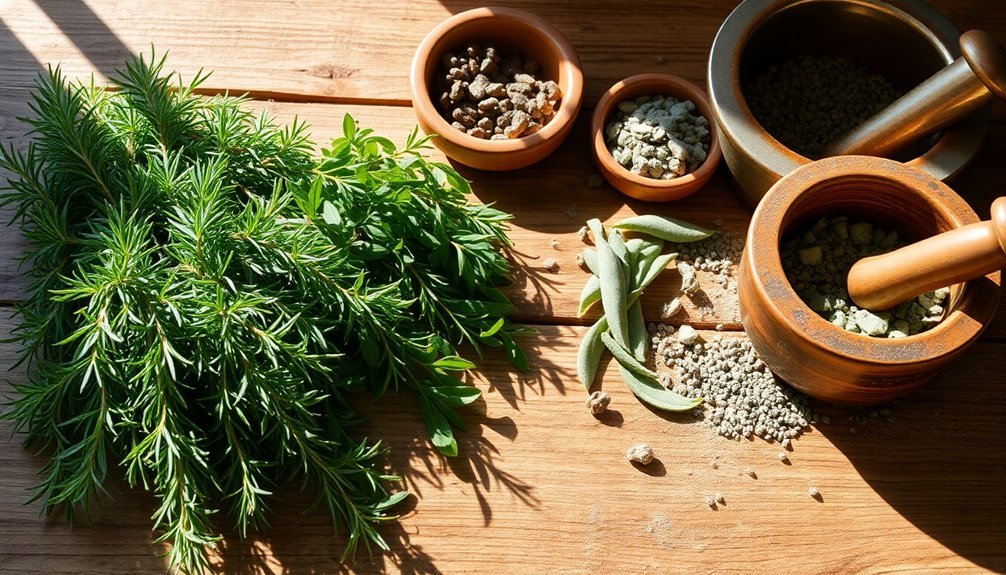
With your solar cooking setup optimized, let's focus on maximizing flavor through strategic herb combinations. You'll get the best results by layering dried herbs early in the cooking process and finishing with fresh ones.
Add robust dried herbs like rosemary, thyme, and oregano at the start of slow-cooked dishes, using about one-third the amount you'd use fresh.
As your meal nears completion, sprinkle delicate fresh herbs to brighten the flavors and enhance visual appeal. For off-grid cooking success, crush dried herbs between your fingers before adding them to release their essential oils.
Remember that longer-cooking solar meals benefit from dried herbs' concentrated flavors, while fresh herbs work best in quick-cooking dishes or as finishing touches. You can even combine both types to create complex flavor profiles.
Control Steam For Maximum Impact
To harness steam's power in off-grid cooking, you'll need to master its delicate balance. Start by choosing cookware that effectively traps steam, like a CanCooker or Dutch oven, ensuring it's properly sealed to keep moisture inside.
Layer your ingredients strategically, adding just enough liquid to generate steam without drowning the food. You'll want to position fatty ingredients where they'll contribute most to flavor development, while acidic elements like lemon juice or vinegar can help intensify the overall taste profile.
Monitor your heat source carefully – whether it's a campfire, gas stove, or wood-burning setup – to maintain consistent steam production.
You'll know you've got it right when condensation forms on the lid and your food cooks evenly without burning or drying out.
Perfect Your Temperature Zones
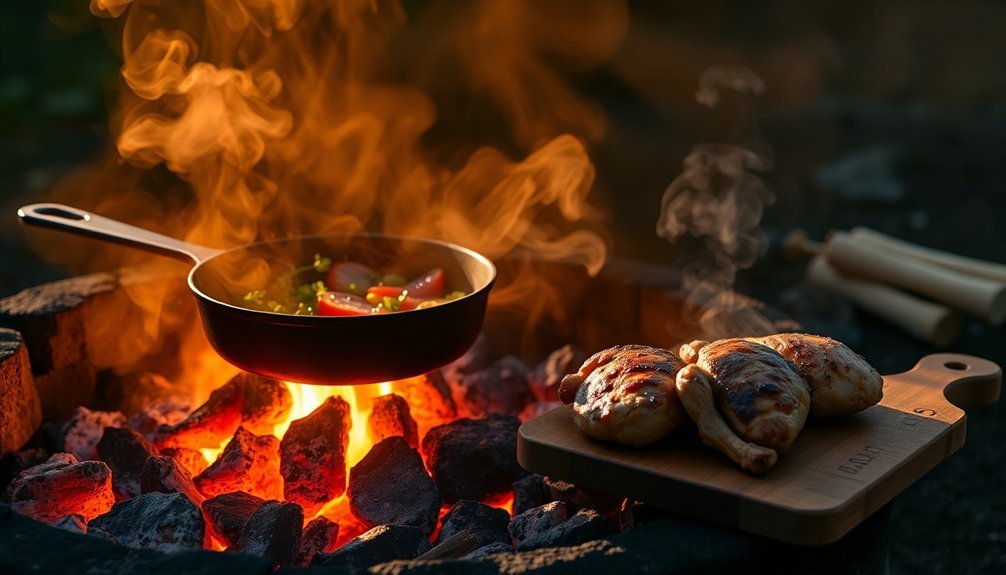
Building on your steam management skills, mastering temperature zones takes your off-grid cooking to new levels.
Your griddle's center reaches scorching temperatures up to 610°F, perfect for searing proteins and creating that coveted crust. You'll find temperatures drop by about 100°F near the edges, creating natural cooling zones for finishing dishes or keeping food warm.
Learn to dance between these zones to elevate your cooking:
- Move proteins from hot centers to cooler edges once seared, preventing overcooking while maintaining warmth
- Use the intense central heat for initial searing, then shift to edges for thorough cooking
- Cook multiple items simultaneously by matching their heat needs to appropriate zones
- Keep delicate items on the periphery while blast-cooking hardier foods in the center
Create Textural Depth
You'll create more satisfying off-grid meals by combining multiple textures, like pairing crispy nuts with tender slow-cooked meats or adding crunchy vegetables to creamy stews.
Try layering different cooking methods, such as slow-braising your main dish while preparing crispy garnishes or toasting breadcrumbs for contrast.
The interplay between soft and crunchy elements keeps each bite interesting and makes simple ingredients feel more complex.
Mix Soft and Crunchy
While flavor dominates most cooking discussions, the interplay between soft and crunchy textures can transform an ordinary off-grid meal into a memorable dining experience.
You'll want to master the art of combining contrasting textures in your outdoor cooking. Layer tender, slow-cooked meats with crispy toppings like fried shallots, or add crunchy nuts to your creamy camp stews.
Don't forget to incorporate raw vegetables for fresh crunch alongside soft-cooked grains and legumes.
- Top your Dutch oven stews with toasted breadcrumbs or crushed nuts
- Pair creamy mashed potatoes with crispy-skinned meats
- Add raw bell peppers and carrots to soft-cooked grain bowls
- Garnish pureed soups with crunchy croutons or seeds
Layer Multiple Cooking Methods
To create remarkable depth in off-grid meals, mastering multiple cooking methods transforms simple ingredients into complex, textured dishes.
You'll access deeper flavors by combining techniques like smoking in your Dutch oven, then finishing on a wood-burning stove. Or start with solar dehydrating to concentrate flavors before pressure cooking.
Try searing meat on your propane stove, then slow-cooking it in a wonder oven to achieve fork-tender results.
For vegetables, begin with a quick char on your grill, then let them slowly roast in your solar oven.
You can even layer smoking and pressure cooking by using your smoker grill's temperature control before transferring to a pressure cooker.
The key is thinking beyond single cooking methods and experimenting with combinations that build complex flavor profiles.
Balance Heat With Acidity

Since mastering heat and acidity can make or break your off-grid meals, understanding their relationship is essential for creating well-balanced dishes.
When you're cooking off-grid, you'll find that acidic ingredients like lemon juice, vinegar, and wine can transform your dishes by enhancing flavors that might otherwise seem flat.
Whether you're using a solar cooker or preserving food, you'll want to balance your heat application with the right amount of acidity.
- Add acids gradually while cooking to build layers of flavor – start with small amounts and adjust to taste
- Use a 2:1 ratio of oil to vinegar in dressings for perfect balance
- Incorporate fresh acidic ingredients like tomatoes when cooking isn't possible
- Experiment with different acid sources, from citrus to pickled vegetables, to find what works best
Finish With Flavor Boosters
You'll boost any off-grid meal's flavor by finishing with fresh herbs like basil, cilantro, or mint scattered on top just before serving.
Adding a splash of citrus juice or zest brightens dishes while cutting through rich ingredients and bringing out subtle flavors.
A final drizzle of quality finishing oils, such as scallion oil or chili oil, creates an aromatic layer that ties all the flavors together.
Fresh Herbs Add Punch
While dried herbs have their place in off-grid cooking, fresh herbs deliver an unmatched burst of flavor that can transform an ordinary dish into something extraordinary.
You'll find that herbs like basil offer sweet notes, while rosemary and thyme provide earthy depth. Fresh herbs not only enhance flavors but also create enticing aromas that make your off-grid meals more appealing before you even take a bite.
To make the most of fresh herbs in your off-grid cooking:
- Layer herbs strategically – use woody herbs like rosemary early in cooking, and delicate ones like basil at the finish
- Balance flavors by pairing herbs with complementary ingredients – try parsley with acidic tomatoes or mint in invigorating salads
- Create herb pastes and pestos to preserve your harvest
- Freeze excess herbs in ice cube trays with oil for year-round use
Citrus Brightens Every Dish
Beyond the garden-fresh flavors of herbs, citrus fruits pack a powerful punch in off-grid cooking as natural flavor enhancers.
You'll find that a squeeze of lemon brightens soups and stews, while lime adds zest to Mexican and Thai-inspired dishes. Orange brings natural sweetness to glazes and marinades, and grapefruit adds complexity to reduction sauces.
Make the most of citrus by using both juice and zest. Transform simple mayonnaise with a splash of lemon, or create vibrant marinades for grilled meats and fish.
Don't forget to add citrus zest to roasted vegetables for an extra layer of flavor. For long-term storage, preserve lemons in salt or create citrus-infused oils by blending zest with neutral oils.
These bright flavors will elevate your off-grid cooking from basic to extraordinary.
Drizzle Finishing Oils Last
The final drizzle of a high-quality finishing oil can transform an ordinary off-grid meal into a gourmet experience.
When you're cooking off-grid, keep a bottle of premium finishing oil, like Spanish Picual olive oil, ready for that last flavor enhancement. You'll need just a few drops to add a bold, antioxidant-rich layer that elevates your dish without heat, preserving all its nutritional benefits.
- Store your finishing oil in a cool, dark place to maintain its robust flavors
- Add it just before serving to dishes like salads, sandwiches, or even popcorn
- Use it to balance flavors and create a satisfying mouthfeel in your meals
- Start with a small amount – remember, it takes 24lbs of olives to make one liter
This final touch will turn your simple camp cooking into memorable outdoor dining.
Frequently Asked Questions
How Long Can Solar-Cooked Meals Safely Sit in a Wonder Oven?
You can safely keep your solar-cooked meals in a Wonder Oven for 8-12 hours, as long as you've heated them to proper temperatures first and they maintain heat above 140°F (57°C) during storage.
What's the Best Way to Season Cast Iron Cookware Without Electricity?
You'll want to season your cast iron over a campfire or outdoor stove. Apply thin layers of grapeseed or canola oil, heat until smoking, then let cool. Repeat this process 3-4 times for best results.
Can I Substitute Dried Mushrooms for Fresh Ones in Off-Grid Recipes?
Yes, you can substitute dried mushrooms for fresh ones – use 3 ounces dried for every pound of fresh. Just rehydrate them in hot water first, strain, and cook them. The soaking liquid adds bonus flavor too.
How Do Different Woods Affect the Flavor of Fire-Cooked Dishes?
When you cook over wood, each type creates distinct flavors: hickory offers strong smokiness, oak gives balanced earthiness, cherry adds mild sweetness, and apple provides light fruitiness. These flavors enhance your food's natural taste.
What's the Ideal Container Material for Long-Term Spice Storage Off-Grid?
You'll want to store your spices in airtight metal containers or mylar bags with oxygen absorbers. Metal won't break, protects against light damage, and won't react with spices. Mylar offers excellent long-term preservation.
In Summary
You'll transform your off-grid cooking from basic to extraordinary by mastering these layering techniques. Start with aromatics, build depth through spices and herbs, and finish strong with bright flavor enhancers. Remember that timing and temperature control are your allies in creating complex, satisfying dishes. Keep experimenting with these principles, and you'll soon be cooking memorable meals anywhere the trail takes you.


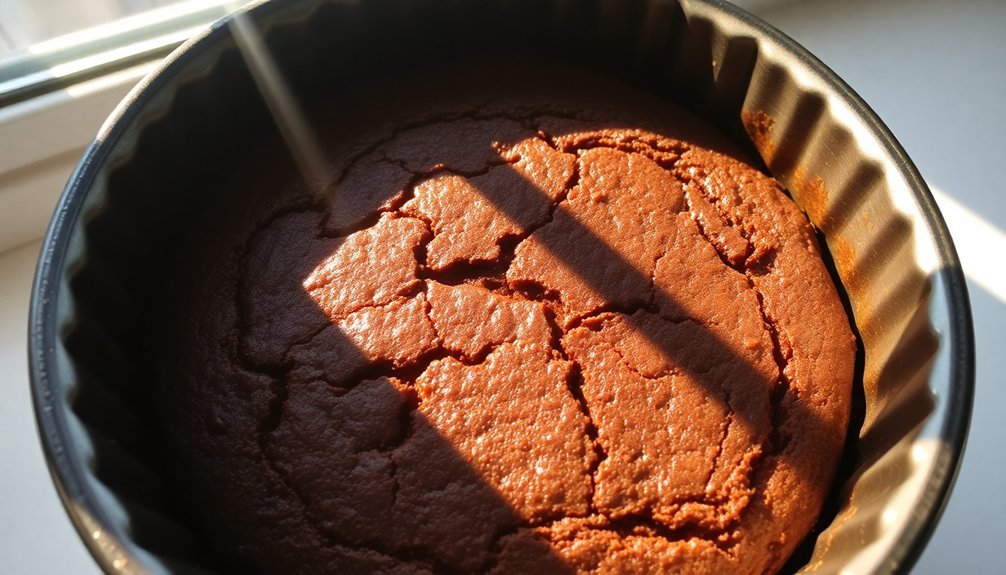
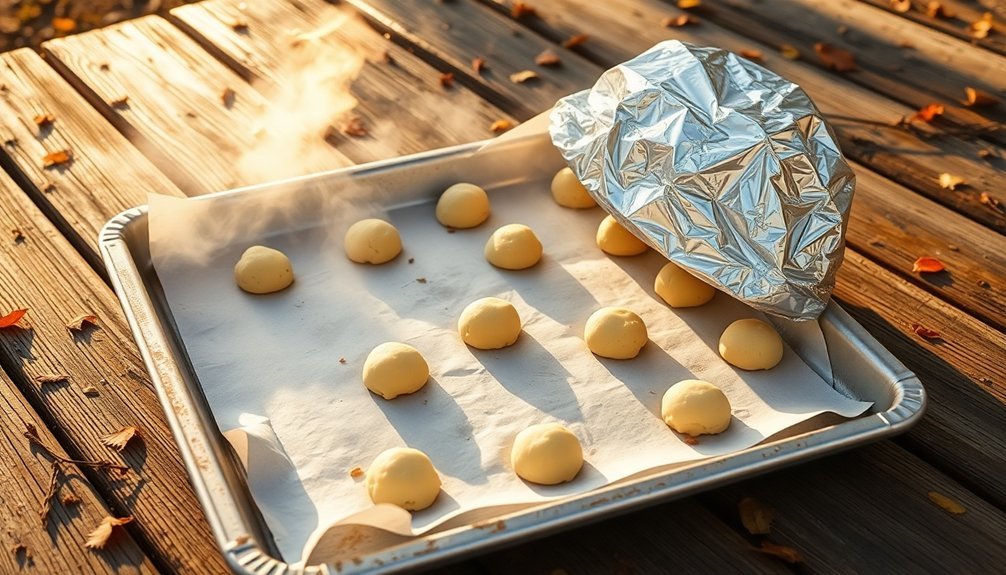
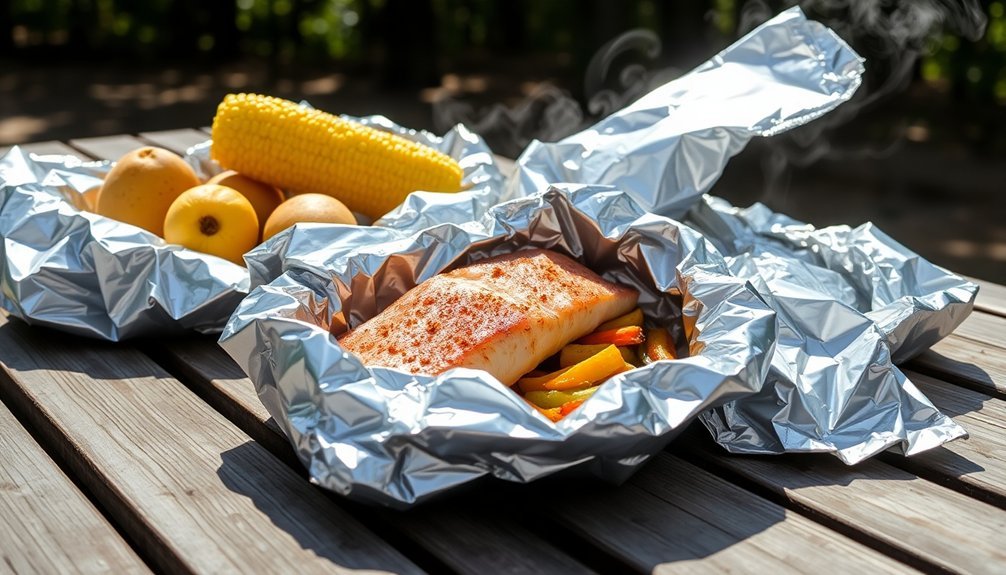
Leave a Reply